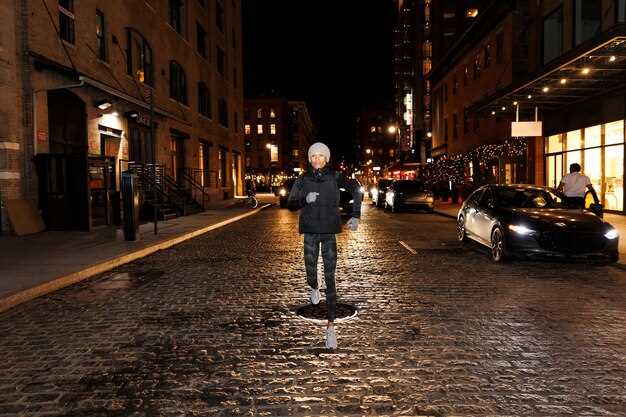
Riding at Night – Visibility and Safety Tips

As the sun sets and darkness envelops the roads, the challenge of maintaining visibility while riding increases significantly for cyclists. Night riding can be exhilarating, but it also demands heightened awareness and preparation to ensure safety. Understanding the unique risks associated with night cycling is crucial for every cyclist who wishes to enjoy the freedom of riding after dark.
Effective visibility is paramount for ensuring that cyclists are seen by motorists and pedestrians alike. Specialized gear, such as reflective clothing and high-quality lights, can enhance your presence on the road. Choosing the right equipment is not merely about compliance but about actively protecting yourself while enjoying the ride at night. The right lights should not just illuminate your path but also signal your location to others, reducing the risk of accidents.
Moreover, it is essential to make informed decisions about routing and riding behavior when cycling at night. Familiarizing yourself with the terrain, adhering to traffic rules, and maintaining a steady pace can greatly contribute to your overall safety. By prioritizing visibility and understanding the intricacies of riding after dark, cyclists can navigate the night with confidence and enjoy the ride without unforeseen setbacks.
Choosing the Right Lights for Safe Night Cycling

When cycling at night, ensuring optimal visibility is paramount for your safety on the road. Selecting the appropriate lights is a crucial step in enhancing your presence to both other cyclists and motorists. A combination of front and rear lights is essential, as each serves a different purpose.
Front lights illuminate the path ahead, helping you navigate obstacles and uneven surfaces. Look for a bright, long-range light that offers a beam of at least 200 lumens for urban riding. Adjustable settings can also be beneficial, allowing you to switch between steady beams and flashing modes based on your environment.
Rear lights are vital for alerting vehicles to your presence from behind. Choose a rear light that is highly visible, preferably with multiple flashing modes to attract attention during low-light conditions. Lights with a red hue are standard, as they stand out against the darkness. Ensure your rear light is mounted at a height that maximizes visibility to drivers.
Consider utilizing helmet lights or additional clip-on lights for greater visibility. Helmets equipped with lights provide the advantage of being visible from various angles, while clip-on options can be attached to bags or clothing, increasing your overall visibility profile.
Battery life is another key factor. Opt for lights with rechargeable batteries or long-lasting disposables to avoid the risk of running out of power during rides. Regularly check and maintain your lights to ensure they function properly and replace any burnt-out bulbs promptly.
Finally, it is advisable to invest in lights that are weather-resistant. Night ridings can occur in various conditions, and having reliable, durable lights ensures safety regardless of the elements.
Wearable Gear to Enhance Visibility at Night
When riding at night, visibility becomes a crucial factor for safety. To ensure that you are seen by other road users, consider incorporating various wearable gear into your nighttime cycling routine.
One of the most effective items is a reflective vest. These vests are designed to catch and reflect light from vehicle headlights, making you easily noticeable from a distance. Opt for vests that feature bright colors and a wide reflective surface to maximize your visibility.
Additionally, illuminated accessories such as LED armbands or ankle bands can significantly enhance your presence on the road. These lightweight bands can be worn on your limbs and provide additional light sources that allow you to stand out in low-light conditions.
Another great option is a headlamp or helmet light. These devices not only illuminate your path but also draw attention to your head, which is a key point of visibility while riding. They can be easily adjusted to focus light in the direction you’re facing, improving both your vision and the ability of others to see you.
Wearing bright and reflective clothing is also essential. Jackets and pants made from high-visibility materials provide a dual benefit: they keep you warm and well-protected while also ensuring you are more noticeable during night rides.
Lastly, don’t overlook the importance of bike-mounted lights. While not wearable gear in the strictest sense, adding white front lights and red rear lights completes your visibility strategy. These lights signal your presence and intended direction to other road users.
Navigating Traffic and Avoiding Hazards After Dark

During night riding, maintaining visibility is crucial not only for your safety but also for the safety of others on the road. When cycling after dark, ensure that you are equipped with appropriate lights and reflective gear. Position front white lights and rear red lights effectively to catch the attention of motorists, while wearing reflective clothing can enhance your visibility in low-light conditions.
Understanding traffic patterns at night is essential. Streets may be quieter, but this does not mean that hazards are absent. Be vigilant for vehicles that may not see you, particularly at intersections and street corners. Always signal your intentions clearly to communicate with motorists, ensuring they are aware of your presence and movements.
Pay close attention to road conditions, as darkness can obscure obstacles. Potholes, debris, and even small animals may pose significant risks when visibility is limited. Slow down in unfamiliar areas to give yourself ample time to react. Use your peripheral vision to scan for potential hazards and stay alert to sounds around you that may indicate approaching vehicles or other cyclists.
Utilizing designated bike lanes and staying predictable in your movements can also enhance your safety during night rides. Avoid sudden changes in direction and adhere to traffic laws to foster a safer environment for both yourself and other road users. Remember, as a cyclist, you have the responsibility to navigate safely and effectively in dim conditions.